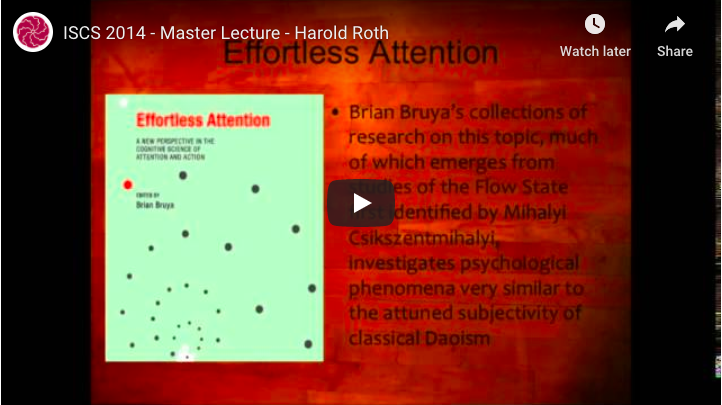Interoception, awareness of one’s body, informs our sense of being in the world.Over time, we form associations between experiences and embodied responses,creating a set of expected body responses. While these expectations allow for rapid, proactive responses to life’s challenges, they can also mask unexpected embodied feelings. Meditation often contains an interoceptive focus such as breath …
Topic Archives:
Concurrent Session 3 – Meditation, Ecology, and Subjectivity: Performing Entangled Selves
The main goal of this presentation is to explore the entanglements betweentechnologies of the self and ecology. I am particularly interested in the ways in which the modern self — characterized by Elias as the homo clausus and by Watts as the skin-encapsulated ego — can be suspended, eroding the dualism between self and others, …
Concurrent Session 3 – Spiritual Well-Being in Historical Perspective
Over the past 20 years, there has been a growing interest in economic and psychological studies of happiness through the concept of “subjective well-being.” Contemplative studies can also be situated within this history, insofar as it is indebted to mindfulness studies, Buddhist modernism, and thus the twin goals of minimizing suffering and enhancing well-being. Contemplative …
Continue reading “Concurrent Session 3 – Spiritual Well-Being in Historical Perspective”
Master Lecture – Science, Daoism, and Scholarly Subjectivity
The Classical Daoist tradition in China, known through its two famous “mystical” works, the Daodejing («The Way and its Potency») and the Zhuangzi («Teachings of Master Zhuang”), provides specific advice about forms of contemplative practice that develop qualities of selfless and impartial cognition thus enabling accurate perceptions, judgments and spontaneous intuitions to be made about …
Continue reading “Master Lecture – Science, Daoism, and Scholarly Subjectivity”
ISCS 2014 – Master Lecture – Harold Roth
Science, Daoism, and Scholarly Subjectivity
Concurrent Session 2 – “Interaction First”: How Gendlin’s Process Philosophy Grounds the First Person Perspective
Eugene Gendlin’s “focusing” is frequently referred to as a Western form of meditation. Attention toward “felt meaning” and the experiential effects of verbalization enable a deep sense-making process. It is used in psychology, pedagogy, qualitative research, creative work, and in meditation retreats. Besides his acclaimed research in psychology, Gendlin is also a philosophical “pioneer” (Petitmengin) …
Concurrent Session 2 – A Profile Is Not a Self: A Buddhist Critique of Privilege and Power in the Construction of Social Media Platforms
Taking as our starting point the appropriation of Buddhist principles such as “mindfulness” by Silicon Valley organizations, this paper outlines a normative framework for the critique of constructions of the self in online platforms, with a primary emphasis on Facebook. Through an analysis of public statements from CEO Mark Zuckerberg, we highlight tensions between the …
Concurrent Session 2 – Contemplative Neuroscience, the Phenomenology of Attention and the Mereology of the Subject
In this paper, I argue that results from contemplative neuroscience can help resolve a dispute between Husserl and Gurwitsch regarding whether attention is endogenous or exogenous. The empirical results indicate that attention is endogenous, i.e., that we are subjectively aware — and to a certain extent in control — of the direction of our attention. …
Concurrent Session 1 – Distinctions of Contemplative Practice in Different Religious Traditions and Relevance to Neuroscience
Contemplative practices of the many traditions of the West and of the East have different characteristics. For example, the absorption of mystics (in Christian or Sufi traditions) has a different character than does Buddhist contemplation. Whereas the mystic enters into the subtle domain of mind in the experience of a higher power (in the face …
Concurrent Session 1 – “This peace, this rest, this eternity”: Meditation and Consciousness in Modernist Literature
This paper explores the role of the meditative mind in modernist literatureand theories of consciousness. Modernist authors, such as Virginia Woolf, Marcel Proust, and William Faulkner, are known for their fascination with subjective perception and self-conscious interiority, as well as representations of trauma and illness. This paper shows how the hitherto unexplored trajectory of the …


